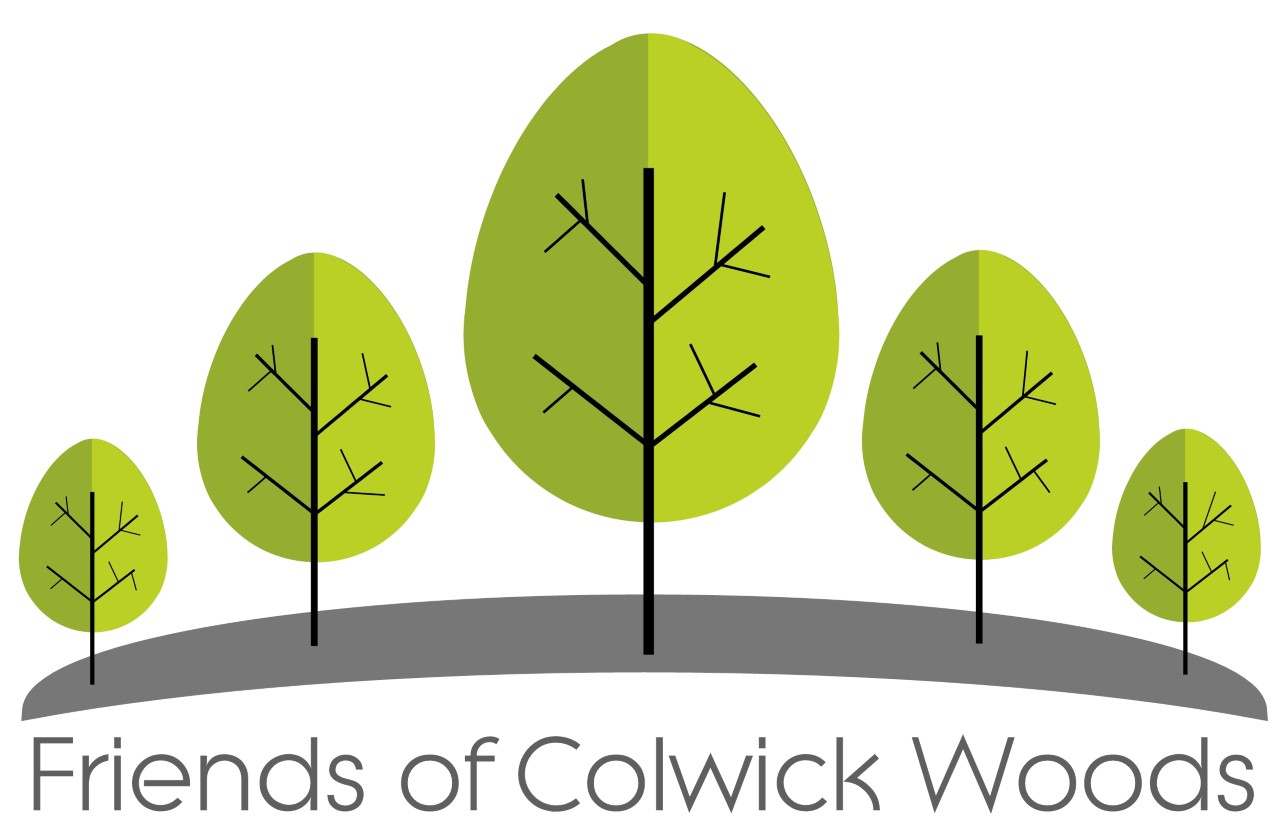[fusion_builder_container hundred_percent=”no” hundred_percent_height=”no” hundred_percent_height_scroll=”no” hundred_percent_height_center_content=”yes” equal_height_columns=”no” menu_anchor=”” hide_on_mobile=”small-visibility,medium-visibility,large-visibility” status=”published” publish_date=”” class=”” id=”” border_size=”” border_color=”” border_style=”solid” margin_top=”” margin_bottom=”” padding_top=”” padding_right=”” padding_bottom=”” padding_left=”” gradient_start_color=”” gradient_end_color=”” gradient_start_position=”0″ gradient_end_position=”100″ gradient_type=”linear” radial_direction=”center center” linear_angle=”180″ background_color=”” background_image=”” background_position=”center center” background_repeat=”no-repeat” fade=”no” background_parallax=”none” enable_mobile=”no” parallax_speed=”0.3″ background_blend_mode=”none” video_mp4=”” video_webm=”” video_ogv=”” video_url=”” video_aspect_ratio=”16:9″ video_loop=”yes” video_mute=”yes” video_preview_image=”” filter_hue=”0″ filter_saturation=”100″ filter_brightness=”100″ filter_contrast=”100″ filter_invert=”0″ filter_sepia=”0″ filter_opacity=”100″ filter_blur=”0″ filter_hue_hover=”0″ filter_saturation_hover=”100″ filter_brightness_hover=”100″ filter_contrast_hover=”100″ filter_invert_hover=”0″ filter_sepia_hover=”0″ filter_opacity_hover=”100″ filter_blur_hover=”0″][fusion_builder_row][fusion_builder_column type=”1_1″ layout=”1_1″ spacing=”” center_content=”no” link=”” target=”_self” min_height=”” hide_on_mobile=”small-visibility,medium-visibility,large-visibility” class=”” id=”” hover_type=”none” border_size=”0″ border_color=”” border_style=”solid” border_position=”all” border_radius=”” box_shadow=”no” dimension_box_shadow=”” box_shadow_blur=”0″ box_shadow_spread=”0″ box_shadow_color=”” box_shadow_style=”” padding_top=”” padding_right=”” padding_bottom=”” padding_left=”” margin_top=”” margin_bottom=”” background_type=”single” gradient_start_color=”” gradient_end_color=”” gradient_start_position=”0″ gradient_end_position=”100″ gradient_type=”linear” radial_direction=”center center” linear_angle=”180″ background_color=”” background_image=”” background_image_id=”” background_position=”left top” background_repeat=”no-repeat” background_blend_mode=”none” animation_type=”” animation_direction=”left” animation_speed=”0.3″ animation_offset=”” filter_type=”regular” filter_hue=”0″ filter_saturation=”100″ filter_brightness=”100″ filter_contrast=”100″ filter_invert=”0″ filter_sepia=”0″ filter_opacity=”100″ filter_blur=”0″ filter_hue_hover=”0″ filter_saturation_hover=”100″ filter_brightness_hover=”100″ filter_contrast_hover=”100″ filter_invert_hover=”0″ filter_sepia_hover=”0″ filter_opacity_hover=”100″ filter_blur_hover=”0″ last=”no”][fusion_title title_type=”text” rotation_effect=”bounceIn” display_time=”1200″ highlight_effect=”circle” loop_animation=”off” highlight_width=”9″ highlight_top_margin=”0″ before_text=”” rotation_text=”” highlight_text=”” after_text=”” hide_on_mobile=”small-visibility,medium-visibility,large-visibility” class=”” id=”” content_align=”left” size=”1″ font_size=”” animated_font_size=”” line_height=”” letter_spacing=”” margin_top=”” margin_bottom=”” margin_top_mobile=”” margin_bottom_mobile=”” text_color=”” animated_text_color=”” highlight_color=”” style_type=”default” sep_color=””]
Birds
[/fusion_title][/fusion_builder_column][/fusion_builder_row][/fusion_builder_container][fusion_builder_container hundred_percent=”no” hundred_percent_height=”no” hundred_percent_height_scroll=”no” hundred_percent_height_center_content=”yes” equal_height_columns=”no” menu_anchor=”” hide_on_mobile=”small-visibility,medium-visibility,large-visibility” status=”published” publish_date=”” class=”” id=”” border_size=”” border_color=”” border_style=”solid” margin_top=”” margin_bottom=”” padding_top=”” padding_right=”” padding_bottom=”” padding_left=”” gradient_start_color=”” gradient_end_color=”” gradient_start_position=”0″ gradient_end_position=”100″ gradient_type=”linear” radial_direction=”center center” linear_angle=”180″ background_color=”” background_image=”” background_position=”center center” background_repeat=”no-repeat” fade=”no” background_parallax=”none” enable_mobile=”no” parallax_speed=”0.3″ background_blend_mode=”none” video_mp4=”” video_webm=”” video_ogv=”” video_url=”” video_aspect_ratio=”16:9″ video_loop=”yes” video_mute=”yes” video_preview_image=”” filter_hue=”0″ filter_saturation=”100″ filter_brightness=”100″ filter_contrast=”100″ filter_invert=”0″ filter_sepia=”0″ filter_opacity=”100″ filter_blur=”0″ filter_hue_hover=”0″ filter_saturation_hover=”100″ filter_brightness_hover=”100″ filter_contrast_hover=”100″ filter_invert_hover=”0″ filter_sepia_hover=”0″ filter_opacity_hover=”100″ filter_blur_hover=”0″][fusion_builder_row][fusion_builder_column type=”1_4″ layout=”1_3″ spacing=”” center_content=”no” link=”” target=”_self” min_height=”” hide_on_mobile=”small-visibility,medium-visibility,large-visibility” class=”” id=”” hover_type=”none” border_size=”0″ border_color=”” border_style=”solid” border_position=”all” border_radius=”” box_shadow=”no” dimension_box_shadow=”” box_shadow_blur=”0″ box_shadow_spread=”0″ box_shadow_color=”” box_shadow_style=”” padding_top=”” padding_right=”” padding_bottom=”” padding_left=”” margin_top=”” margin_bottom=”” background_type=”single” gradient_start_color=”” gradient_end_color=”” gradient_start_position=”0″ gradient_end_position=”100″ gradient_type=”linear” radial_direction=”center center” linear_angle=”180″ background_color=”” background_image=”” background_image_id=”” background_position=”left top” background_repeat=”no-repeat” background_blend_mode=”none” animation_type=”” animation_direction=”left” animation_speed=”0.3″ animation_offset=”” filter_type=”regular” filter_hue=”0″ filter_saturation=”100″ filter_brightness=”100″ filter_contrast=”100″ filter_invert=”0″ filter_sepia=”0″ filter_opacity=”100″ filter_blur=”0″ filter_hue_hover=”0″ filter_saturation_hover=”100″ filter_brightness_hover=”100″ filter_contrast_hover=”100″ filter_invert_hover=”0″ filter_sepia_hover=”0″ filter_opacity_hover=”100″ filter_blur_hover=”0″ last=”no”][fusion_widget_area name=”avada-custom-sidebar-wildlifemenu” title_size=”” title_color=”” background_color=”” padding_top=”” padding_right=”” padding_bottom=”” padding_left=”” hide_on_mobile=”small-visibility,medium-visibility,large-visibility” class=”” id=”” /][/fusion_builder_column][fusion_builder_column type=”3_4″ layout=”2_3″ spacing=”” center_content=”no” link=”” target=”_self” min_height=”” hide_on_mobile=”small-visibility,medium-visibility,large-visibility” class=”” id=”” hover_type=”none” border_size=”0″ border_color=”” border_style=”solid” border_position=”all” border_radius=”” box_shadow=”no” dimension_box_shadow=”” box_shadow_blur=”0″ box_shadow_spread=”0″ box_shadow_color=”” box_shadow_style=”” padding_top=”” padding_right=”” padding_bottom=”” padding_left=”” margin_top=”” margin_bottom=”” background_type=”single” gradient_start_color=”” gradient_end_color=”” gradient_start_position=”0″ gradient_end_position=”100″ gradient_type=”linear” radial_direction=”center center” linear_angle=”180″ background_color=”” background_image=”” background_image_id=”” background_position=”left top” background_repeat=”no-repeat” background_blend_mode=”none” animation_type=”” animation_direction=”left” animation_speed=”0.3″ animation_offset=”” filter_type=”regular” filter_hue=”0″ filter_saturation=”100″ filter_brightness=”100″ filter_contrast=”100″ filter_invert=”0″ filter_sepia=”0″ filter_opacity=”100″ filter_blur=”0″ filter_hue_hover=”0″ filter_saturation_hover=”100″ filter_brightness_hover=”100″ filter_contrast_hover=”100″ filter_invert_hover=”0″ filter_sepia_hover=”0″ filter_opacity_hover=”100″ filter_blur_hover=”0″ last=”no”][fusion_text columns=”” column_min_width=”” column_spacing=”” rule_style=”default” rule_size=”” rule_color=”” hide_on_mobile=”small-visibility,medium-visibility,large-visibility” class=”” id=”” animation_type=”” animation_direction=”left” animation_speed=”0.3″ animation_offset=””]
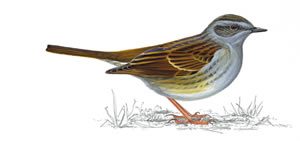 DUNNOCK
DUNNOCKA small brown and grey bird. Quiet and inobtrusive, it is often seen on its own, creeping along the edge of a flower bed or near to a bush, moving with a rather nervous, shuffling gait, often flicking its wings as it goes. When two rival males come together they become animated with lots of wing-flicking and loud calling..
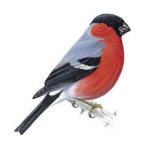 BULLFINCH
BULLFINCHThe male is unmistakable with his bright pinkish-red breast and cheeks, grey back, black cap and tail, and bright white rump. The flash of the rump in flight and the sad call note are usually the first signs of bullfinches being present. They feed voraciously of the buds of various trees in spring and were once a ‘pest’ of fruit crops.
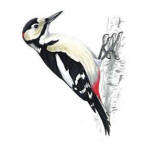 GREAT SPOTTED WOODPECKER
GREAT SPOTTED WOODPECKERAbout blackbird-sized and striking black-and-white. It has a very distinctive bouncing flight and spends most of its time clinging to tree trunks and branches, often trying to hide on the side away from the observer. Its presence is often announced by its loud call or by its distinctive spring ‘drumming’ display. The male has a distinctive red patch on the back of the head and young birds have a red crown.
CHIFF-CHAFF
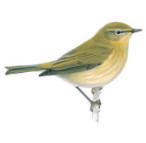 A small olive-brown warbler which actively flits through trees and shrubs, with a distinctive tail-wagging movement. Less bright than the similar willow warbler and readily distinguished by its song, from where it gets its name. Picks insects from trees and also flies out to snap them up in flight.
A small olive-brown warbler which actively flits through trees and shrubs, with a distinctive tail-wagging movement. Less bright than the similar willow warbler and readily distinguished by its song, from where it gets its name. Picks insects from trees and also flies out to snap them up in flight.
 MAGPIE
MAGPIEMagpies seem to be jacks of all trades – scavengers, predators and pest-destroyers, their challenging, almost arrogant attitude has won them few friends. With its noisy chattering, black-and-white plumage and long tail, there is nothing else quite like the magpie in the UK. When seen close-up its black plumage takes on an altogether more colourful hue with a purplish-blue iridescent sheen to the wing feathers, and a green gloss to the tail. Non-breeding birds will gather together in flocks.
 BLACKBIRD
BLACKBIRDThe males live up to their name but, confusingly, females are brown often with spots and streaks on their breasts. The bright orange-yellow beak and eye-ring make adult male blackbirds one of the most striking garden birds. One of the commonest UK birds, its mellow song is also a favourite.s.
 WREN
WRENThe wren is a tiny brown bird, although it is heavier, less slim, than the even smaller goldcrest. It is dumpy, almost rounded, with a fine bill, quite long legs and toes, very short round wings and a short, narrow tail which is sometimes cocked up vertically. For such a small bird it has a remarkably loud voice. It is the commonest UK breeding bird, although it suffers declines during prolonged, severely cold winters.
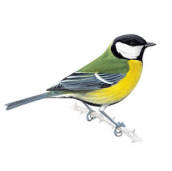 GREAT TIT
GREAT TITThe largest UK tit – green and yellow with a striking glossy black head with white cheeks and a distinctive two-syllable song. It is a woodland bird which has readily adapted to man-made habitats to become a familiar garden visitor. It can be quite aggressive at a birdtable, fighting off smaller tits. In winter it joins with blue tits and others to form roaming flocks which scour gardens and countryside for food..
 ROBIN
ROBINThe UK’s favourite bird – with its bright red breast it is familar throughout the year and especially at Christmas! Males and females look identical, and young birds have no red breast and are spotted with golden brown. Robins sing nearly all year round and despite their cute appearance, they are aggressively territorial and are quick to drive away intruders. They will sing at night next to street lights..
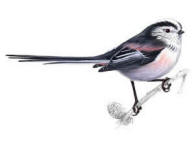 LONG TAILED TIT
LONG TAILED TITThe long-tailed tit is easily recognisable with its distinctive colouring, a tail that is bigger than its body, and undulating flight. Gregarious and noisy residents, long-tailed tits are most usually noticed in small, excitable flocks of about 20 birds. Like most tits, they rove the woods and hedgerows, but are also seen on heaths and commons with suitable bushes.
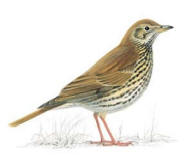 SONG THRUSH
SONG THRUSHA familiar and popular garden songbird whose numbers are declining seriously, especially on farmland making it a Red List species. Smaller and browner than a mistle thrush with smaller spotting. Its habit of repeating song phrases distinguish it from singing blackbirds. It likes to eat snails which it breaks into by smashing them against a stone with a flick of the head.
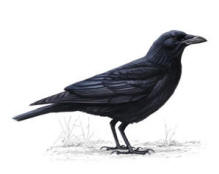 CARRION CROW
CARRION CROWThe all-black carrion crow is one of the cleverest, most adaptable of our birds. It is often quite fearless, although it can be wary of man. They are fairly solitary, usually found alone or in pairs. The closely related hooded crow has recently been split as a separate species. Carrion crows will come to gardens for food and although often cautious initially, they soon learn when it is safe, and will return repeatedly to take advantage of whatever is on offer..
 KESTREL
KESTRELA familiar sight with its pointed wings and long tail, hovering beside a roadside verge. Kestrels have been recently declining as a result of habitat degradation due to continuing intensive management of farmland and so it is included on the Amber List. They have adapted readily to man-made environments and can survive right in the centre of cities.
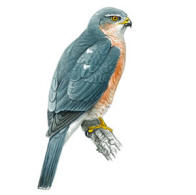 SPARROWHAWK
SPARROWHAWKAdult males have a slate grey back and white underparts, closely barred with orange. Their grey tail has 4-5 dark bars. Females are larger, with brown upperparts, a white stripe over the eye and dark barring underneath. They look heavier than the males. Their broad, rounded wings and long tail are adapted for flying between trunks and branches enabling them to weave in and out of trees at high speed. They never hover like kestrels.s.
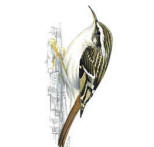 TREECREEPER
TREECREEPERThe treecreeper is small, very active, bird that lives in trees. It has a long, slender, downcurved bill. It is speckly brown above and mainly white below. It breeds in the UK and is resident here. Birds leave their breeding territories in autumn but most range no further than 20 km. Its population is mainly stable.
 GOLDCREST
GOLDCRESTThe Goldcrest is the UK’s smallest songbird and is dull green above and buff white below with a distinctive orange or yellow crown stripe. It is a widespread species, closely associated with coniferous forest. In winter it will join with flocks of tits and other woodland species. In the UK it occurs widely save for in treeless areas such as on the Fens and in northern Scotland. It suffers in very cold winters and the recent successive mild winters are a cause for optimism.
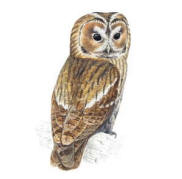 TAWNY OWL
TAWNY OWLThe tawny owl is an owl the size of a pigeon. It has a rounded body and head, with a ring of dark feathers around its face surrounding the dark eyes. It is mainly reddish brown above and paler underneath. It is a widespread breeding species in England, Wales and Scotland but not found in Ireland. Birds are mainly residents with established pairs probably never leaving their territories. Young birds disperse from breeding grounds in autumn.
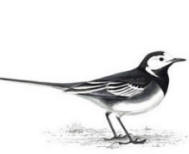 PIED WAGTAIL
PIED WAGTAILA delightful small, long-tailed and rather sprightly black and white bird. When not standing and frantically wagging its tail up and down it can be seen dashing about over lawns or car parks in search of food. It frequently calls when in its undulating flight and often gathers at dusk to form large roosts in city centres.
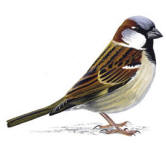 HOUSE SPARROW
HOUSE SPARROWNoisy and gregarious, these cheerful exploiters of man’s rubbish and wastefulness, have even managed to colonise most of the world. The ultimate opportunist perhaps, but now struggling to survive in the UK along with many other once common birds. They are clearly declining in both gardens and the wider countryside and their recent declines have earned them a place on the Red List.
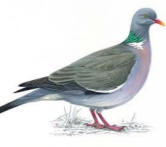 WOODPIGEON
WOODPIGEONThe UK’s largest and commonest pigeon, it is largely grey with a white neck patch and white wing patches, clearly visible in flight. Although shy in the countryside it can be tame and approachable in towns and cities. Its cooing call is a familiar sound in woodlands as is the loud clatter of its wings when it flies away..
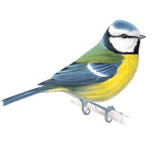 BLUE TIT
BLUE TITIts colourful mix of blue, yellow, white and green make the blue tit one of the most attractive resident garden birds. Almost any garden with a peanut feeder will attract them and they readily breed in nestboxes. In winter they form flocks with other tit species and a garden with four or five at a bird table at any one time, may be feeding 20 or more.
 SWALLOW
SWALLOWSwallows are small birds with dark glossy blue backs, red throats, pale under parts and long distinctive tail streamers. They are extremely agile in flight and spend most of their time on the wing. They are widespread breeding birds in the Northern Hemisphere, migrating south in winter. Recent declines due to loss of habitat quality in both their breeding and wintering grounds mean they are an Amber List species.
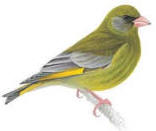 GREENFINCH
GREENFINCHIts twittering and wheezing song, and flash of yellow and green as it flies, make this finch a truly colourful character. Nesting in a garden conifer, or feasting on black sunflower seeds, it is a popular garden visitor, able to take advantage of food in town and city gardens at a time when intensive agriculture has deprived it of many weed seeds in the countryside. Although quite sociable, they may squabble among themselves or with other birds at the bird table.
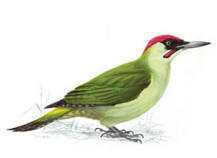 GREEN WOODPECKER
GREEN WOODPECKERThe green woodpecker is the largest of the three woodpeckers that breed in Britain. It has a heavy-looking body, short tail and a strong, long bill. It is greeny-grey on its upperparts with a bright green rump and red on the top of its head. They have an undulating flight. They climb up tree trunks and branches and will move around to be on the side away from anyone watching.s.
 COAL TIT
COAL TITNot as colourful as some of its relatives, the coal tit has a distinctive grey back, black cap, and white patch at the back of its neck. Its smaller, more slender bill than blue or great tits means it can feed more successfully in conifers. A regular visitor to most peanut feeders, they will take and store food for eating later. In winter they join with other tits to form flocks which roam through woodlands and gardens in search of food..
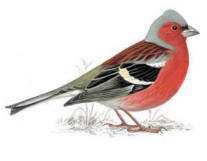 CHAFFINCH
CHAFFINCHThe chaffinch is the UK’s second commonest breeding bird, and is arguably the most colourful of the UK’s finches. Its patterned plumage helps it to blend in when feeding on the ground and it becomes most obvious when it flies, revealing a flash of white on the wings and white outer tail feathers. It does not feed openly on bird feeders – it prefers to hop about under the bird table or under the hedge. You’ll usually hear chaffinches before you see them, with their loud song and varied calls.
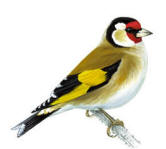 GOLDFINCH
GOLDFINCHA highly coloured finch with a bright red face and yellow wing patch. Sociable, often breeding in loose colonies, they have a delightful liquid twittering song and call. Their long fine beaks allow them to extract otherwise inaccessible seeds from thistles and teasels. Increasingly they are visiting bird tables and feeders. In winter many UK goldfinches migrate as far south as Spain.
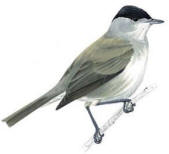 BLACKCAP
BLACKCAPA distinctive greyish warbler, the male has a black cap, and the female a chestnut one. Its delightful fluting song has earned it the name ‘northern nightingale’. Although primarily a summer visitor birds from Germany and north-east Europe are increasingly spending the winter in the UK.
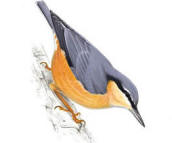 NUTHATCH
NUTHATCHThe nuthatch is a plump bird about the size of a great tit that resembles a small woodpecker. It is blue-grey above and whitish below, with chestnut on its sides and under its tail. It has a black stripe on its head, a long black pointed bill, and short legs. It breeds in central and southern England and in Wales, and is resident, with birds seldom travelling far from the woods where they hatch.
 JAY
JAYAlthough they are the most colourful members of the crow family, jays are actually quite difficult to see. They are shy woodland birds, rarely moving far from cover. The screaming call usually lets you know a jay is about and it is usually given when a bird is on the move, so watch for a bird flying between the trees with its distinctive flash of white on the rump. Jays are famous for their acorn feeding habits and in the autumn you may see them burying acorns for retrieving later in the winter..
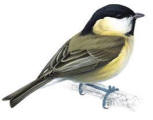 WILLOW TIT
WILLOW TITBetween blue and great tits in size, with no yellow, green or blue. It has a large sooty-black cap extending to the back of the neck and a small untidy black bib. It is mid-brown above, with whiter cheeks and pale buff-grey underparts. Its wings show a pale panel not found in marsh tits. Its recent population declines make it a Red List species.
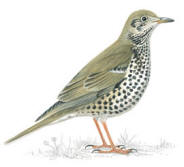 MISTLE THRUSH
MISTLE THRUSHThis is a pale, black-spotted thrush – large, aggressive and powerful. It stands boldly upright and bounds across the ground while in flight, it has long wings and its tail has whitish edges. It is most likely to be noticed perched high at the top of a tree, singing its fluty song or giving its rattling call in flight.
[/fusion_text][/fusion_builder_column][/fusion_builder_row][/fusion_builder_container]
 DUNNOCK
DUNNOCK BULLFINCH
BULLFINCH GREAT SPOTTED WOODPECKER
GREAT SPOTTED WOODPECKER A small olive-brown warbler which actively flits through trees and shrubs, with a distinctive tail-wagging movement. Less bright than the similar willow warbler and readily distinguished by its song, from where it gets its name. Picks insects from trees and also flies out to snap them up in flight.
A small olive-brown warbler which actively flits through trees and shrubs, with a distinctive tail-wagging movement. Less bright than the similar willow warbler and readily distinguished by its song, from where it gets its name. Picks insects from trees and also flies out to snap them up in flight. MAGPIE
MAGPIE BLACKBIRD
BLACKBIRD WREN
WREN GREAT TIT
GREAT TIT ROBIN
ROBIN LONG TAILED TIT
LONG TAILED TIT SONG THRUSH
SONG THRUSH CARRION CROW
CARRION CROW KESTREL
KESTREL SPARROWHAWK
SPARROWHAWK TREECREEPER
TREECREEPER GOLDCREST
GOLDCREST TAWNY OWL
TAWNY OWL PIED WAGTAIL
PIED WAGTAIL HOUSE SPARROW
HOUSE SPARROW WOODPIGEON
WOODPIGEON BLUE TIT
BLUE TIT SWALLOW
SWALLOW GREENFINCH
GREENFINCH GREEN WOODPECKER
GREEN WOODPECKER COAL TIT
COAL TIT CHAFFINCH
CHAFFINCH GOLDFINCH
GOLDFINCH BLACKCAP
BLACKCAP NUTHATCH
NUTHATCH JAY
JAY WILLOW TIT
WILLOW TIT MISTLE THRUSH
MISTLE THRUSH